Borderlands 3 may be familiar, but it feels much better to play
Superior movement and a dedicated gun team bring more substance to the loot-shooter.
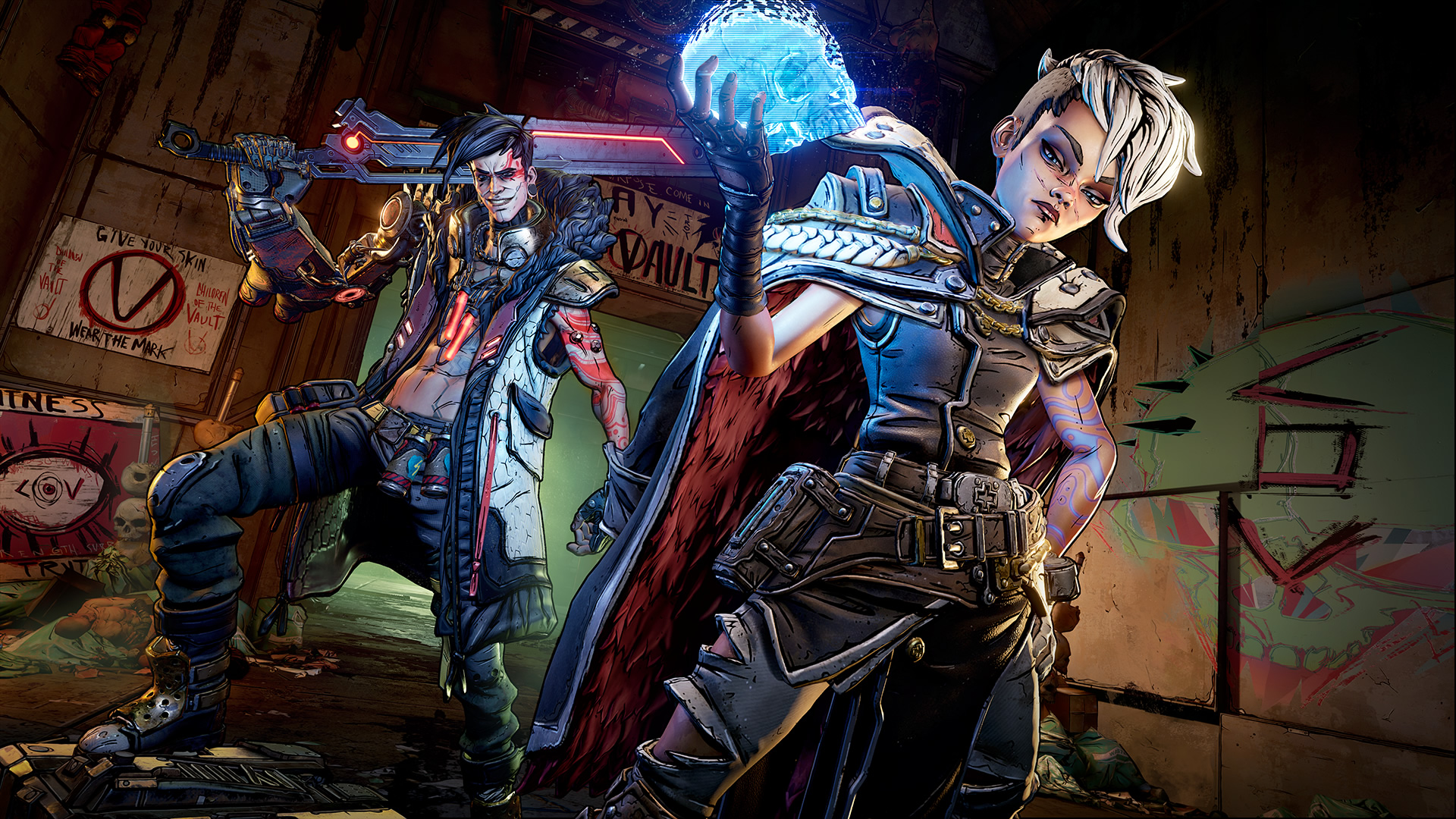
This article was originally published in PC Gamer issue 332 back in June. For more quality articles about all things PC gaming, you can subscribe now in the UK and the US.
I'm in LA, in a 'secret location'—it's a warehouse—to experience the grand unveiling of Borderlands 3. It's early in the day, and I'm still slightly jetlagged. On stage, projected onto a giant screen, Claptrap is doing a dance. His shrieks echo throughout the building. Having established that the series' mascot is back, and—depending on your perspective—as funny or as too-irritating-for-this-time-of-the-morning as usual, the demo continues. There's banter, there's wasteland combat, and there's a miniboss. "Shiv," introduces the title card. "Brought a knife to a gun fight." Borderlands is back.
I'm initially underwhelmed. The early demo introduces some new movement options —sliding and mantling—but nothing that feels like a bold new direction for the series. An iterative sequel is all fine and well, but I've been fighting through wastelands for tens—maybe hundreds—of hours. Is more of the same really enough?
Then, about 40 minutes into the demo, it happens. The demo skips ahead and we're introduced to Sanctuary III. It's Borderlands 3's new hub—a safe zone where players can chat with NPCs, shop, pick up quests and test weapons. It's also a spaceship. From the bridge, we can see the place that has defined the series up to this point: the planet of Pandora and its moon, Elpis. And then we leave, warping out of the system and arriving somewhere new.
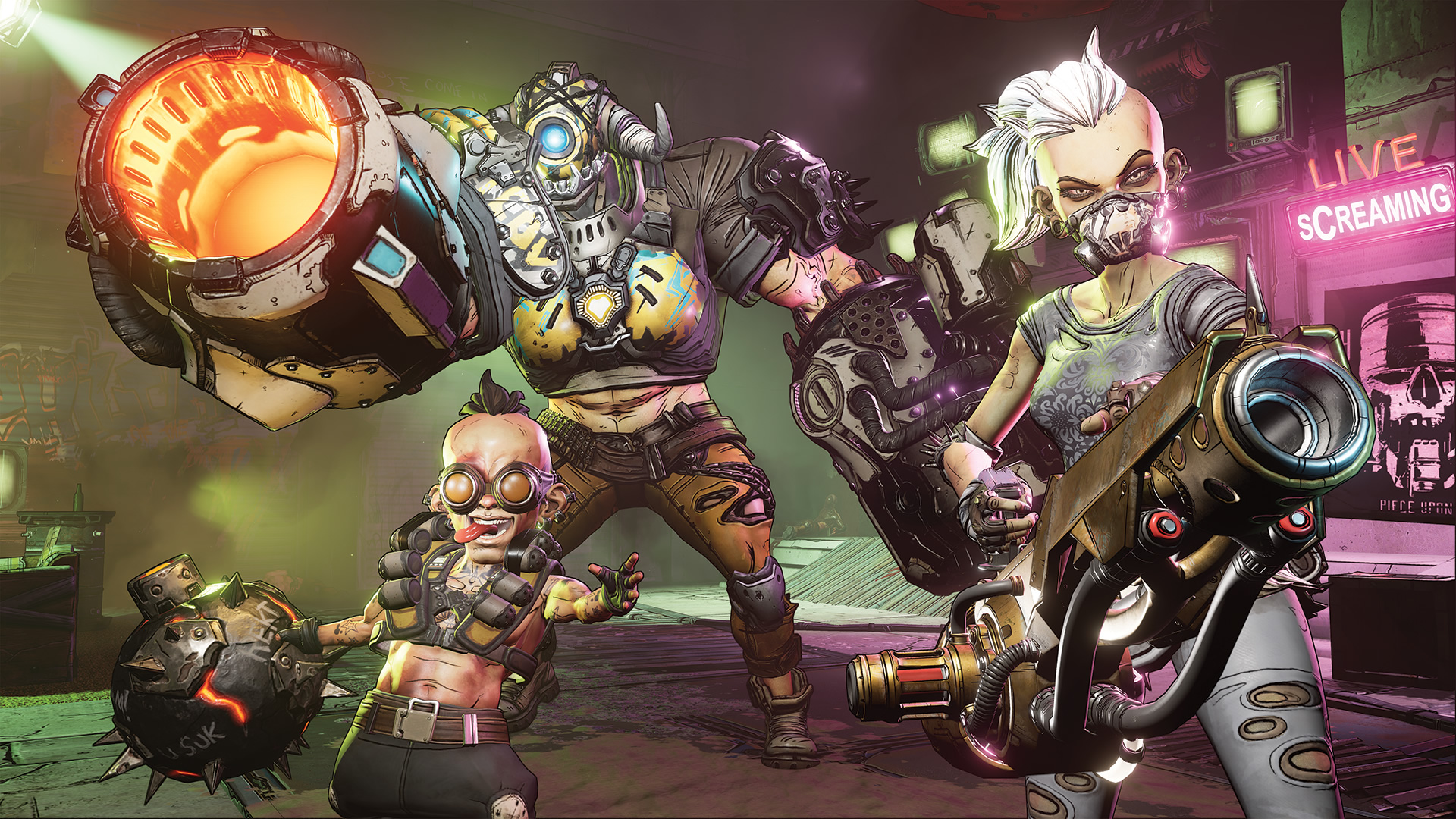
"I think that the desire to leave Pandora has been around for a long time," says Carl Shedd, lead lighting artist. "It's funny, it's a neat split. You have purists who are like, 'I know it was desert, but it felt like home'. I played the Game of the Year edition recently, and it felt so familiar to be back home. But the narrative and design teams wanted to experience what it would mean to be planet hopping. And the first time that I saw the warp, I had that, 'Holy shit, this is kinda cool' moment. And I've gotta be honest, when I saw Pandora out the window, it felt really nostalgic."
Sanctuary III arrives at Promethea, one of a number of planets that will be available in the full game. If Pandora was a murderous backwater, the region of Promethea shown is a murderous sci-fi city, bathed in cool purples at night, and giving way to a rich orange as the sun rises. An asteroid belt orbits the planet, causing frequent eclipses as the space rocks move past. "That was something that came from Randy [Pitchford, CEO of Gearbox]," explains Shedd. "He said, 'Man, this is infinite space. We don't have to have a sun, we don't have to have a moon. Think of crazy shit. Have some fun'."
Crossing borders
Despite the "crazy shit" mandate, Gearbox still wants Borderlands 3 to maintain the series' style and aesthetic. "The challenge came from finding ways to introduce players to unique environments without alienating the feel of the wasteland," says Shepp. "I feel like there was a lot of trepidation from everybody in the art team. We'd have a concept for this planet and that planet, and we'd look at those and go, 'That's really pretty but it just doesn't feel like it belongs in Borderlands'. So I think the challenge was trying to invent environments that felt new and felt fresh, but we all felt that yes, this is a natural place that would exist along with the humour and gameplay. I'm happy with where we've landed."
Keep up to date with the most important stories and the best deals, as picked by the PC Gamer team.
Into new lands
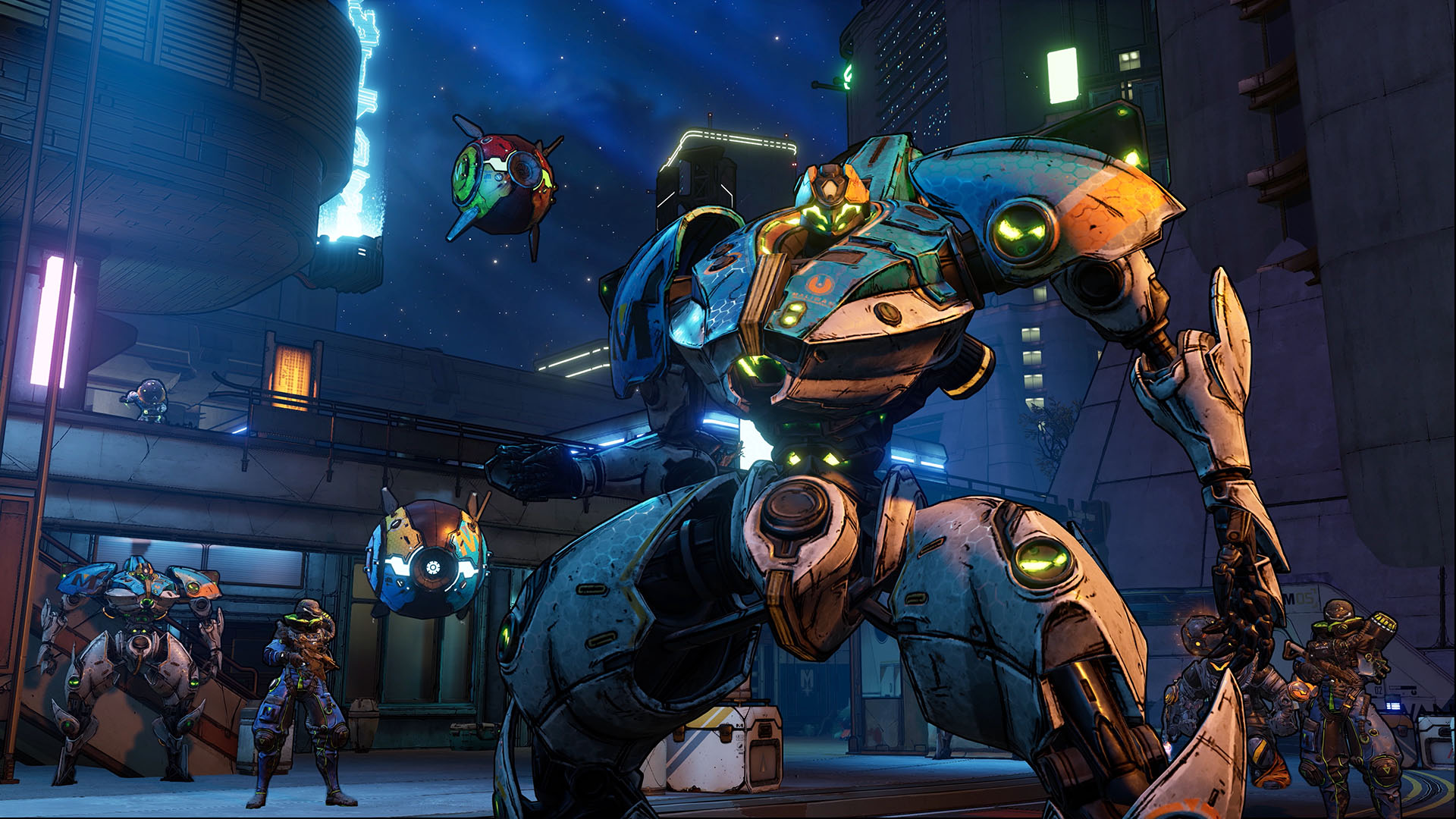
After the presentation, I get to play a section of the game—starting just after the Vault Hunter arrives on Promethea. The reason for Borderlands 3's planet-hopping journey is to find new Vaults—ancient locations full of advanced weapons (or, sometimes, just big prisons containing a giant tentacle monster). Racing you to their location is the Children of the Vault, a new cult headed up by Tyreen and Troy Calypso. On Promethea, they've inserted themselves into a war between weapons manufacturers Atlas—now headed by Tales from the Borderlands' Rhys—and Maliwan, allying with the latter. Working with Atlas, my job is to secure the city.
On stage, Pitchford describes the Calypso twins as "like the douchiest kind of live streamers of the future you can possibly imagine". I get a sense of that when they call to taunt me during a mission. "Superfan," Tyreen enthuses. "So, what do you think of our first corporate sponsors? I gotta say, so far selling out rules."
"We knew we wanted to have these twins, right from the get go," says Paul Sage, creative director. "And then, a little later on, we said, 'OK, we're going to double down on this cult idea'. But internally, we were like, 'I don't know, man, it's just still not hitting'. It wasn't until we hit on this thing where they became unlikable streamers that we were like, 'Oh, that's actually what's making this magic again'. That's what's really bringing them forward into people's minds. It's kind of that punch-in-the- face factor. They're not just evil for evil's sake. They're just people I really don't like that are horrible."
In helping Rhys, I get plenty of opportunity to tangle with Maliwan's army, as well as the bandits following the Children of the Vault. And I have to say, that slide manoeuvre that felt so underwhelming at first? It's a game changer. I've always enjoyed the Borderlands series because of its tone, style and ridiculous loot, but pure combat has always felt simply functional. My time with Borderlands 3, though, suggests that it will be a legitimately great shooter. Movement is more fluid and dynamic, and the guns—which are more varied and absurd—feel better than ever.
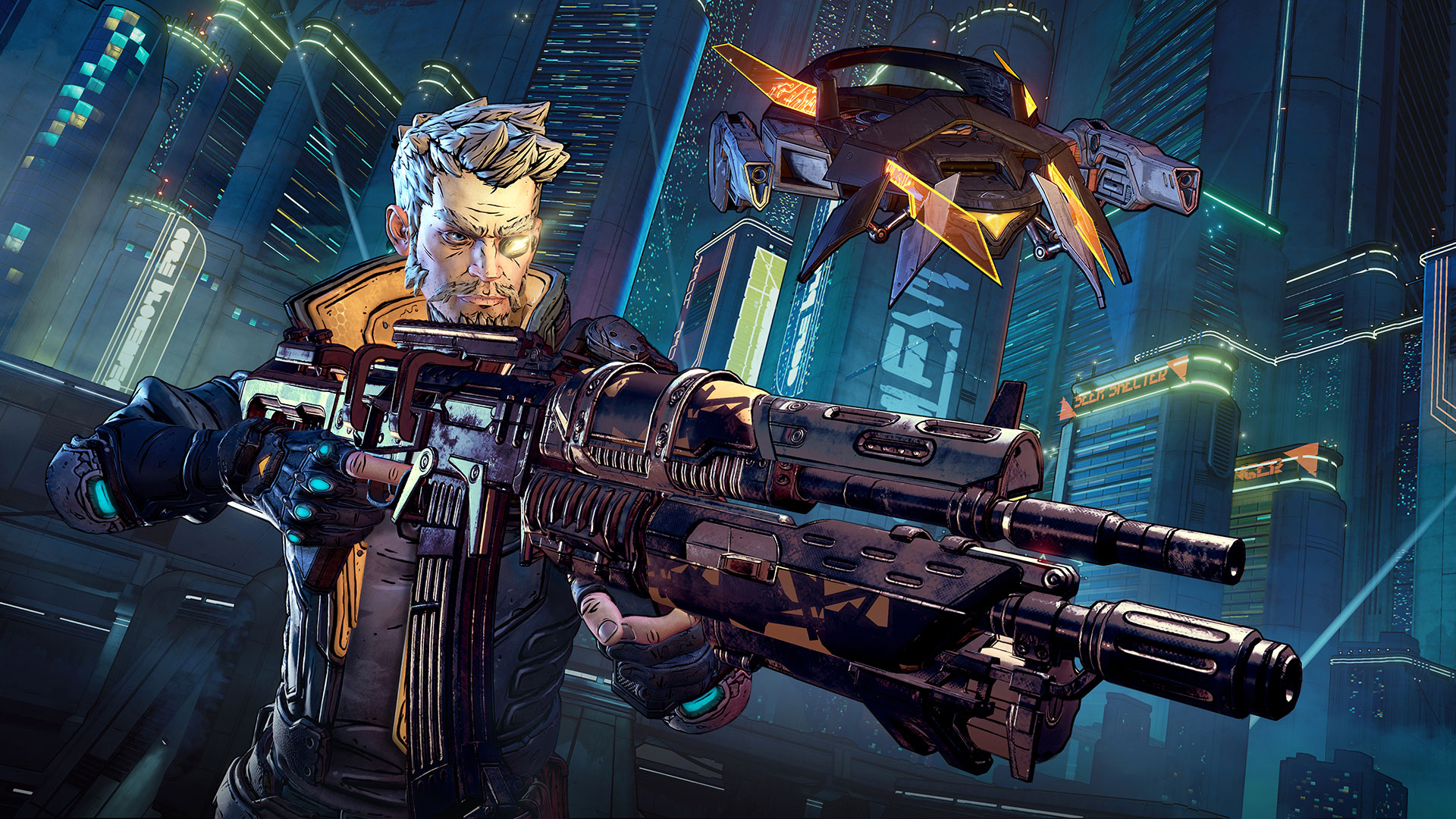
"We've been trying to push the envelope as far as that's concerned in every sort of facet," says Kevin Powell, systems designer. "And so yeah, better guns, systems feel better, and we have a lot of quality of life changes with the sliding and mantling."
Beyond the pure feel of the gunplay, more work has been put into creating exciting combat arenas. "We definitely want players to interact with the environment a little more," says Powell. "And so you notice if you shot a pipe, there was some oil that came out, and if you shot an explosive barrel or had a fire elemental weapon, you can light that puddle on fire. Various elemental things can interact with things in the world in different ways, and so we really wanted to push that concept ... There's a lot of destructibility throughout the game. Of course, we have ridiculous weapons that explode everywhere so it's cool to kind of see things fly everywhere and stuff like that."
The main attraction, though, is still the guns, and the procedural generation system that ensures no two players will be wielding the same arsenal. Guns are an important part of the Borderlands universe, to the point that each different manufacturer, as well as being an entity within the story, also has its own design philosophy and weapon parts. "Our gun team has done an amazing job of pushing that concept of these are the guns and they do ridiculous crazy shit," says Powell. "I believe in the previous Borderlands there were around 300 or so weapon parts, and then in this one we have over a thousand. If you can imagine, there's a lot more variation that can happen when you generate those weapons."
"We have a fully formed weapons team this time, that includes concept guys, content art guys, game designers," explains Shapp. "And they've been incredibly efficient, they've always been ahead of everyone on schedule. So they'll show up to our review meetings and they'll always have the best stuff. It's kind of a nice shot in the arm, to be reminded what this is all about. Those guys have put in a lot of time and effort and heart into trying to really expand those manufacturer differences. They really put effort into making sure they weren't intermixing parts between manufacturers. They were like, 'This is Tediore, and this is Tediore's parts. This is Malawan, and this is Malawan parts'. I think for us, we're getting closer and closer with every evolution to where our imaginations thought we were ten years ago."
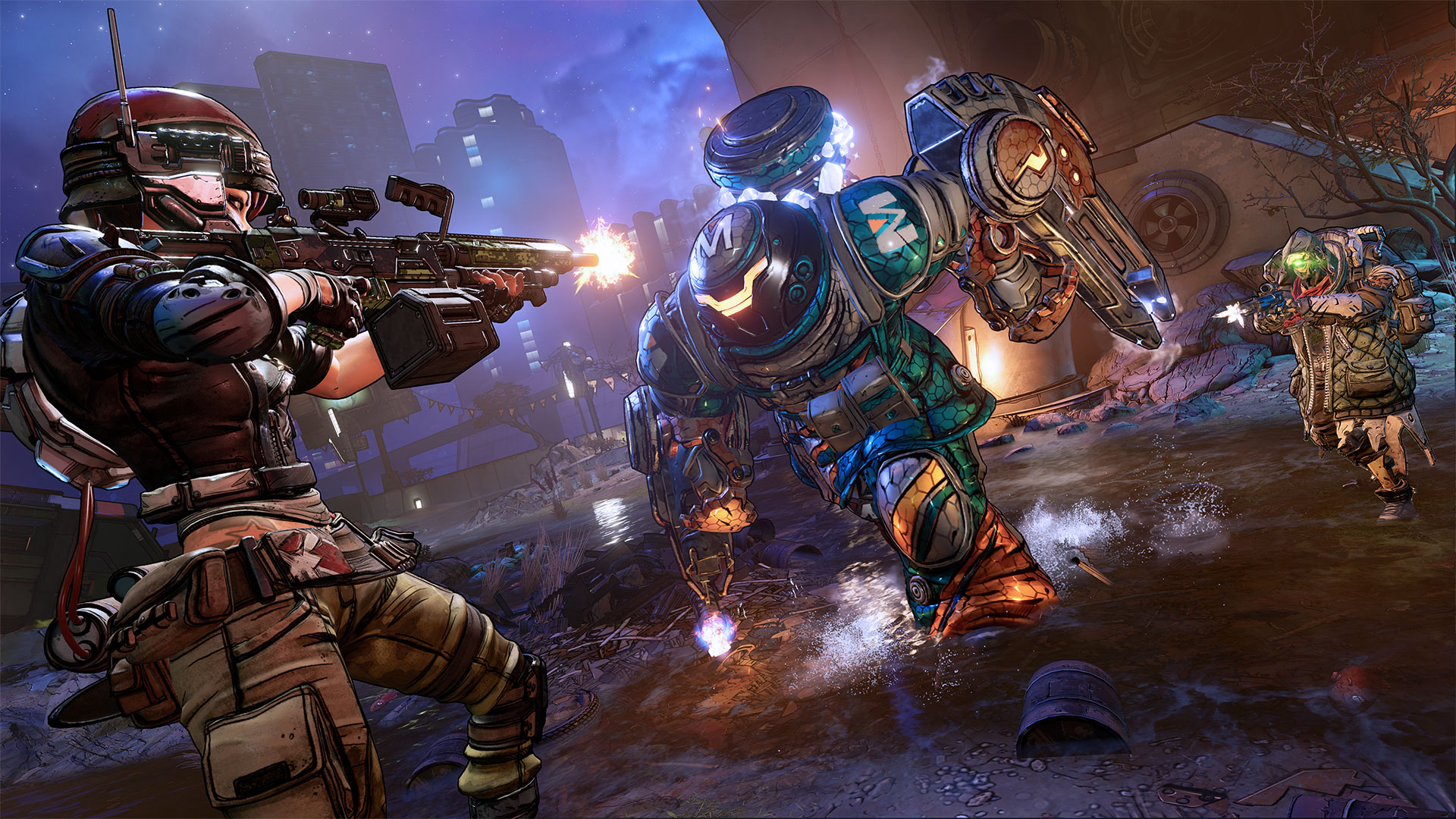
In the demo, despite earning a unique boss weapon that infl icted ridiculous acid damage, my go-to gun ends up being one of these random, procedural drops. It’s a Tediore shotgun that has high range and low bullet spread, making it a beast at turning heads into a gruesome splatter of gibs. Tediore's deal is manufacturing weapons so cheap that, rather than reloading, you just throw it away and have a new one digistruct into your hands. In this case, my shotgun just exploded on impact, but there are other, stranger options. Some Tediore guns will bounce around the room. Others will sprout legs, and walk away, looking for enemies to shoot. Further augmenting the arsenal, some weapons will have secondary fire modes. In the presentation, we see one gun that shoots a tracking dart that, when it hits an enemy, causes bullets to home in on their target.
The 'loot shooter' has become a more competitive genre since the release of Borderlands 2, with Destiny 2, The Division 2 and Anthem all currently vying for players’ attention. Gearbox, however, isn’t tempted by the games-as-a-service trend. Nonetheless, co-op remains an important focus for the sequel. "I come from an MMO background," says Sage, "and so one of the things that I've learned over time is, when you want to play with people, you want to get in quick to the action. I think that is one of the beautiful things about Borderlands 2 and Borderlands 3, the ability to just match and say, 'Hey, I want to go fight bosses, or I want to go have this game plan activity' ... You’re just in there having a good time."
To this end, Borderlands 3 will introduce some infrastructural tweaks to make getting together with friends that much easier. Now, when players group together, the enemies they fight and the gear they collect will be appropriately scaled for each teammate. Gearbox demonstrated the system during the presentation, as a second, higher level player joined the fight. A low level enemy for the first player appeared as a higher level one for their partner. And when the fight is over, Gearbox protects players from teammates with poor impulse control with a new feature that will instance loot to each player, meaning there’s no longer a need to squabble over who needs that legendary drop.
In fact, many of the new or tweaked conveniences seem specifically designed to keep groups moving at pace. A new station on Sanctuary III, for instance, will collect up any guns you don’t pick up during play—presumably meaning groups won’t need to spend a long period of downtime painstakingly sorting through a boss’s drops. Even character skills have been adjusted to fit this mentality. Each Vault Hunter still has three skill trees to pick from, but now each tree features its own active ability that you can swap in and out. Amara, for instance, has a ground pound called Phaseslam, a projectile attack called Phaseblast, and Phasegrap, which holds an enemy in place (similar to Maya’s Phaselock in Borderlands 2). Zane, meanwhile, has an automated drone, a clone that he can swap places with, and a barrier that stops incoming attacks.

What this means is that each character has the potential to fill multiple roles and playstyles, ensuring that even two players who are using the same character can team up and fill a meaningfully different niche.
Bigger and better
The one main question I had during the event was this: to what extent do these different planets change the way a Borderlands game plays? Based on my time on Promethea, the answer is not very much at all. "Same Borderlands formula, but not on Pandora only," as Powell succinctly explains. But my time playing Borderlands 3 only served to reaffirm what I already enjoyed about the series, and had me impressed by the clever tweaks and additions implemented along the way—from better combat and a co-op friendly infrastructure, to, yes, sliding and mantling.
Gearbox doesn’t need to ape the live service loot shooters that have emerged in the seven years since Borderlands 2's release. Rather, they can cherry pick some of their main quality of life innovations, and feed them back into a series that already has its own personality and following. Borderlands 3 will be bigger. It has the potential to be much better. And it’s in space. Beyond that, I think more of the same really will be enough.
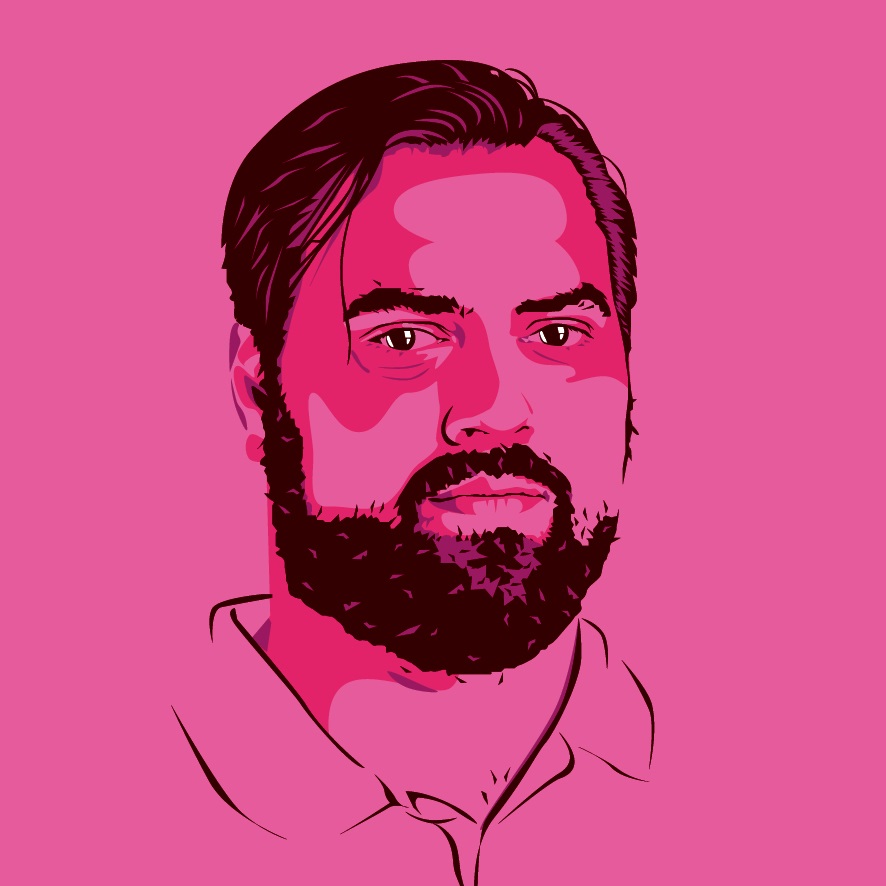
Phil has been writing for PC Gamer for nearly a decade, starting out as a freelance writer covering everything from free games to MMOs. He eventually joined full-time as a news writer, before moving to the magazine to review immersive sims, RPGs and Hitman games. Now he leads PC Gamer's UK team, but still sometimes finds the time to write about his ongoing obsessions with Destiny 2, GTA Online and Apex Legends. When he's not levelling up battle passes, he's checking out the latest tactics game or dipping back into Guild Wars 2. He's largely responsible for the whole Tub Geralt thing, but still isn't sorry.

